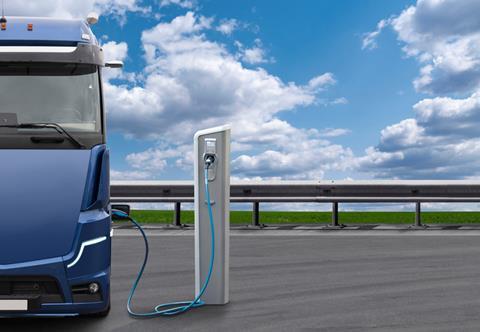As orginally reported by Reuters, California is set to phase out heavy-duty diesel trucks that haul containers to ships and warehouses by 2035.

This has turned California’s bustling seaports into a prime location for forward-looking investors who are lining up to build charging stations for the electric semis that will eventually serve those trade gateways.
Major investors include real estate firm CBRE Group, warehouse giant Prologis, and investment manager BlackRock, all of whom are seeking to benefit when replacement trucks are more widely used. The California Energy Commission estimates the state will need 157,000 medium and heavy-duty chargers by 2030 to support a range of trucks.
The United States has been slower to embrace electric vehicles, including electric semi trucks, than Europe and Asia. However, the drayage, or the transport of freight from an ocean port to a destination, is the sector best suited to begin closing that gap because the shorter, more predictable round trips in this type of transport match the battery capacity of existing trucks, which can be charged overnight in company yards rather than with fast highway chargers that require more energy and infrastructure.
The push by investors such as CBRE and other real estate and infrastructure investors could help overcome a “chicken-and-egg” electric truck adoption lag in the United States. Electric trucks cannot operate without chargers, but it does not make sense to build chargers if drivers are not using electric trucks. A marriage between real estate and energy infrastructure will be needed to accelerate the transition to electric-powered trucking, according to industry experts. The success of commercial truck charging projects hinges not on power generation but on connecting sites with needed energy. The search is on for sites with excess power to accommodate charger projects.


















